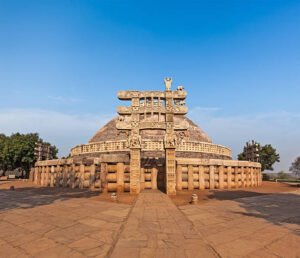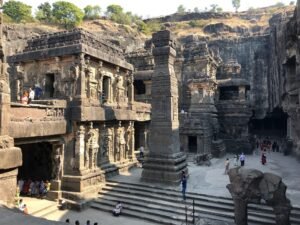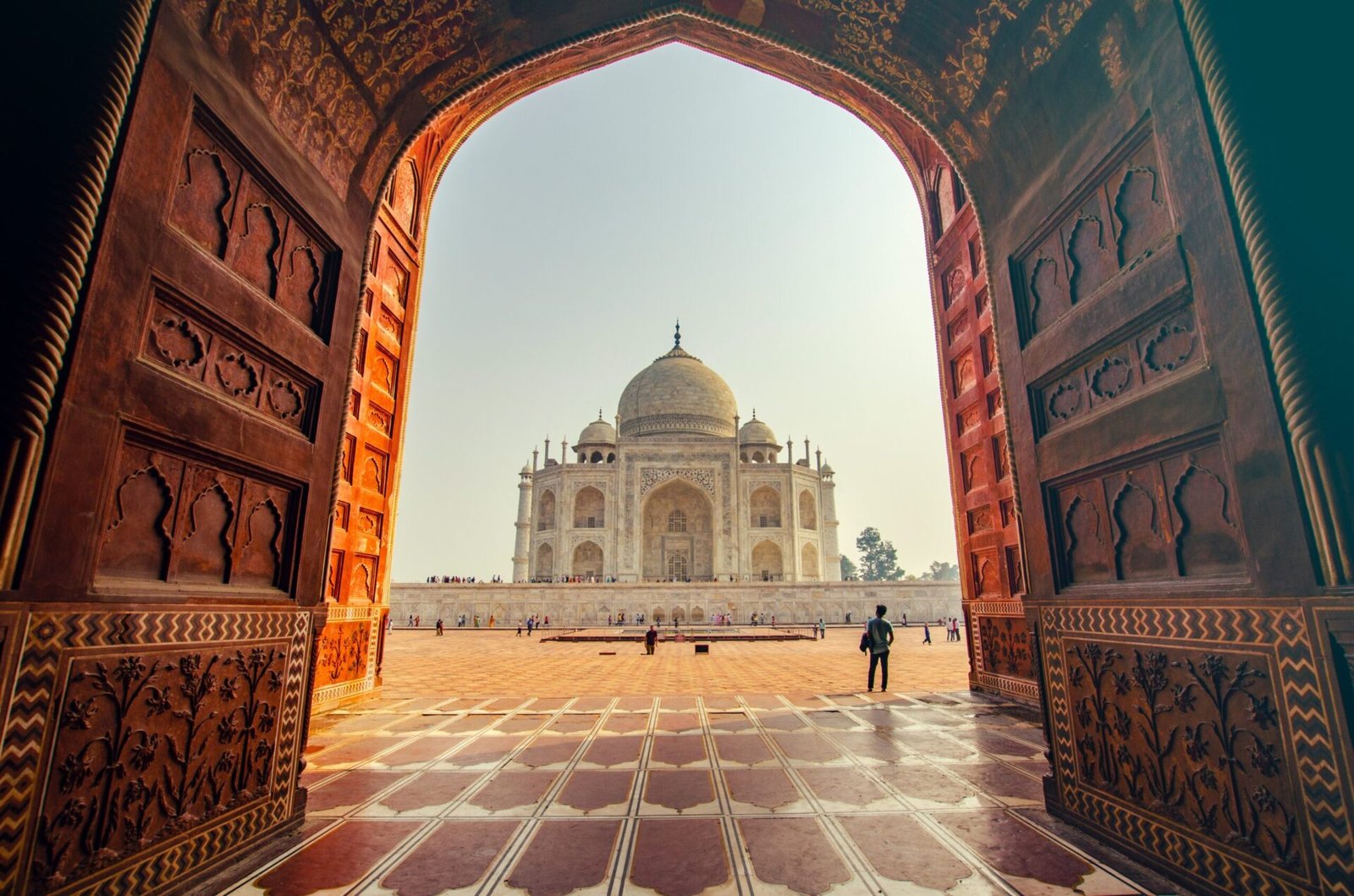Imagine standing before the majestic Taj Mahal, its white marble shimmering under the Indian sun, or wandering through the ancient ruins of Hampi, where every stone whispers tales of a bygone era. These are not mere tourist attractions. They are portals to our past. They embody human creativity, resilience, and diversity.
Vipul Singh
(Professor of Environmental History and Conservation, University of Delhi, Delhi)
Heritage, both tangible, like monuments and sites, and intangible, like cultural and religious traditions and languages, connects us to our ancestors and to each other across borders and generations. Heritage in that sense is the legacy we inherit.
Prime Minister Narendra Modi’s vision of Virasat bhi Vikas bhi – heritage and development, encapsulates this ethos. He emphasises that preserving our past is integral to building a sustainable future. As we celebrated World Heritage Day on April 18, we are reminded of the urgent need to protect these treasures for future generations.
Monuments such as the Iron Pillar and Qutb Minar in Delhi’s Qutb Complex, the Mauryan Pillar Inscriptions, the Sanchi Stupa, the Ajanta Caves, the Taj Mahal, and the Hampi complex are among the many heritage sites regularly visited by tourists from across India and around the world. These timeless structures not only shape our collective identity but also serve as powerful symbols of unity, reminding us of the rich and shared cultural legacy we inherit.


World Heritage Day, officially the International Day for Monuments and Sites, was established in 1982 by the International Council on Monuments and Sites (ICOMOS) during a conference in Tunisia. UNESCO formalized it in 1983, designating April 18 as a global call to safeguard this heritage. Each year, ICOMOS selects a theme—such as “Heritage and Climate” or “Sustainable Heritage” to focus conservation efforts worldwide. This day is not just a celebration; it is a movement, encouraging communities to engage in preservation, educating youth about their roots, and promoting sustainable tourism. In India, heritage walks illuminate sites like Delhi’s Qutub Minar, while in Peru, festivals celebrate Machu Picchu’s Incan legacy.
The United Nations Educational, Scientific and Cultural Organization (UNESCO), founded in 1945, is a cornerstone of global heritage preservation. Headquartered in Paris, UNESCO’s mission spans education, science, culture, and communication, aiming to foster peace through international cooperation. Its flagship initiative, the World Heritage Convention of 1972, identifies and protects sites of “outstanding universal value.” Today, the World Heritage List boasts 1,199 sites across 168 countries – 42 in India (Taj Mahal, Ajanta Caves), 59 in Italy (Colosseum, Pompeii), 25 in Japan (Hiroshima Peace Memorial), and beyond. UNESCO provides funding via the World Heritage Fund, expertise through partnerships, and advocacy for threatened sites. In 2025, with climate change a pressing concern, UNESCO’s focus on resilient heritage aligns with global priorities, supporting nations from Egypt to Indonesia in safeguarding their cultural treasures.
India, with its 42 UNESCO World Heritage Sites, 34 cultural, 7 natural, and 1 mixed, is a treasure trove of history. Delhi exemplifies this richness with the Qutub Minar, a 12th-century minaret, the Red Fort, built in 1639, Humayun’s Tomb that previews the Taj Mahal’s elegance. The Jantar Mantar reflects scientific ingenuity that India had in medieval times. Beyond Delhi, the Taj Mahal in Agra draws over 7 million visitors annually, while the Ajanta and Ellora Caves, Hampi, and Sundarbans National Park narrate India’s diverse saga.


The Archaeological Survey of India (ASI), founded in 1861, manages over 3,600 monuments. It also takes care of the excavation of ancient sites such as Dholavira. It has well trained archaeologist who are able to restore structures with traditional methods. Despite challenges like funding shortages, ASI’s efforts ensure India’s heritage endures.
Economic Impact of Heritage Tourism Worldwide
Heritage tourism is an economic powerhouse globally. In India, tourism contributed 9.1% to GDP in 2024 (USD 11.10 trillion), with heritage tourism generating USD 100–125 billion through ticket sales, local commerce, and foreign exchange (INR 2.31 lakh crore in 2023). Greece’s ancient sites, like the Acropolis, drive tourism to over 20% of GDP, supporting 900,000 jobs. Egypt’s pyramids and temples, attracting 14.9 million visitors in 2023, contribute 12% to GDP, bolstering local economies. Italy’s heritage tourism, cantered on Rome and Florence, accounts for 13% of GDP, with the Colosseum alone generating millions in revenue. China’s Great Wall and Terracotta Army draw 70 million visitors yearly, fuelling a tourism sector worth 11% of GDP. These figures highlight heritage tourism’s role in sustainable development, channelling funds into conservation and community livelihoods.
India’s heritage comes alive aboard special trains. The Palace on Wheels explores Rajasthan’s forts, the Maharajas’ Express links iconic cities, and the Golden Chariot tours South India’s temples. Globally, similar innovations abound: Japan’s Shinkansen, a bullet train doubling as an art gallery, connects cultural hubs, while Peru’s Hiram Bingham train offers luxury travel to Machu Picchu. These experiences blend history, comfort, and accessibility, inspiring sustainable tourism models worldwide.
Italy’s 59 UNESCO sites set a gold standard. Rome’s Colosseum (9 million visitors yearly) uses timed entries and VR tours, while Florence’s Duomo thrives on cultural branding. Japan employs advanced monitoring for Kyoto’s temples, preserving wooden structures with precision. Egypt balances tourism with conservation at Giza, using 3D mapping to monitor wear. China’s Great Wall combines government oversight with international aid, protecting 21,196 kilometers of history. These strategies including crowd management, technology, and partnerships offer blueprints for nations like India.
Cultural and Religious Tourism
India’s recent thrust on cultural tourism is evident in its focused development of spiritual circuits that celebrate the country’s rich religious and civilizational heritage. Central to this initiative is the Varanasi–Prayagraj–Ayodhya circuit, which interlinks three of Hinduism’s most sacred cities. The Kashi Vishwanath Corridor in Varanasi is a flagship project, transforming the pilgrim experience by seamlessly connecting the historic Kashi Vishwanath Temple to the Ganga ghats through modern pathways, infrastructure, and digital services, while preserving its spiritual essence. In Prayagraj, the Mahakumbh remains a magnet for cultural tourism, with massive footfall managed through a blend of traditional practices and smart technologies like surveillance drones, e-ticketing, and real-time crowd monitoring. Meanwhile, Ayodhya is emerging as a major spiritual tourism hub with the construction of the grand Ram Mandir, symbolizing the cultural resurgence of India’s ancient narratives. The temple, along with the city’s broader development plan, is set to attract millions annually, both as a religious site and a symbol of national heritage. Collectively, these projects reflect India’s strategic vision of combining heritage conservation, infrastructure modernization, and digital innovation to create a globally appealing and spiritually resonant tourism experience.
Why Climate Change is a Global Threat to Heritage?
Climate change imperils heritage sites universally. In India, the Taj Mahal battles floods and acid rain, Hampi faces erosion, and the Konark Sun Temple weathers cyclones. Globally, Venice, Italy, saw floods in 2019 that submerged St. Mark’s Basilica; Petra, Jordan, erodes under flash floods; Machu Picchu, Peru, risks landslides; and Australia’s Great Barrier Reef fades from coral bleaching, with 50% of its coral lost since the 1980s. Easter Island’s Moai statues face coastal erosion, while Timbuktu, Mali, battles desertification. Solutions like flood barriers, reforestation, and digital archiving are critical, with UNESCO and the World Monuments Fund leading resilience efforts.
Despite the growing challenges posed by climate change and environmental degradation, heritage tourism continues to thrive—and India stands at a unique crossroads where tradition meets technology. With its rich heritage of monuments, temples, forts, and archaeological wonders, India has immense potential to become a global leader in heritage tourism, especially if the sector actively embraces emerging technologies. Technological innovations such as virtual reality (VR) and augmented reality (AR) can revolutionize the way tourists experience India’s cultural treasures. Imagine immersive VR tours of the Ajanta and Ellora caves, or a digital walk through the ruins of Hampi, available to both domestic and international audiences, allowing access even during monsoons or site restorations. Such digital experiences not only reduce the physical footprint on fragile sites but also make heritage accessible to those unable to travel. Moreover, 3D scanning and digital mapping can play a pivotal role in preserving India’s heritage structures, many of which are at risk from pollution, urban expansion, and natural disasters. Initiatives like the digital reconstruction of the Kedarnath temple precinct after the 2013 floods show how technology can support restoration and resilience.
Global examples, such as solar-powered museums in Morocco and sustainable heritage policies promoted by bodies like ICOMOS, offer blueprints for India to localize and adopt. Integrating these with India’s own sustainability missions, such as the Swachh Bharat Abhiyan and Smart Cities Program, could amplify impact.
Ultimately, a technologically enabled, environmentally conscious approach to heritage tourism can ensure that India’s past is not only remembered but also experienced by future generations—sustainably and inclusively.
Heritage is our bridge to the past and a beacon for the future. World Heritage Day unites us in its protection, with UNESCO, ASI, and global partners leading the way. Heritage tourism fuels economies around the globe, from India’s Taj Mahal to Greece’s Acropolis. At the same time it also fosters cultural exchange. Climate change demands urgent action such as resilient conservation, sustainable practices, and collective responsibility. As we look to the future, PM Modi’s Virasat bhi Vikas bhi serves as a guiding principle, reminding us that preserving our heritage is not just about honouring the past but also about building a sustainable and prosperous future. Together, we can ensure our heritage endures, a timeless gift for generations to come.



